25 Best Apps for Learning Korean

Michael Xing, Founder of Pingo AI
Choosing the right app can make the difference between memorizing a few words and actually speaking Korean. With dozens of top language learning apps promising quick results, you may wonder which ones teach Hangul, build useful vocabulary, fix your pronunciation, and offer real speaking practice. This article cuts through the clutter and points you to apps that offer clear lessons, flashcards with spaced repetition, grammar drills, listening exercises, and conversation options, so you can find the best apps for learning Korean that match your goals.
Pingo AI is an AI language learning app that meets these needs by providing instant speech feedback, tailoring lessons to your level, and creating realistic conversation practice, allowing you to read Hangul, expand your vocabulary, and speak with confidence.
Summary
- Production-first, corrective speaking practice drives measurable gains, with a 2025 study showing 90% of users reported improved language skills after six months of regular app use.
- Realistic timelines matter: the FSI estimates that it takes approximately 2,200 hours for English speakers to learn Korean, and roughly 1 hour of daily study may lead to fluency in about 6 years.
- Passive drills create recognition without usable speech, and 85% of learners report using apps as supplements rather than standalone solutions, which explains widespread plateaus in spoken ability.
- Authentic input and scenario variety enhance transfer to real-world conversations, especially when practice spans multiple contexts, such as role-play scenarios that include over 200 real-world scenarios.
- A balanced study stack beats single-tool habits, for example, three focused conversation sessions weekly, daily spaced-repetition reviews, and one media immersion episode to cover production, retention, and input.
- Track three actionable weekly metrics, not a dozen vanity stats: percent of turns replayed, number of distinct corrections implemented, and whether corrected language was reused, because those three indicators map directly to production gains.
This is where Pingo AI's AI language learning app fits in; it addresses the speaking gap by providing realistic conversation roleplays, replayable corrective feedback, and adaptive prompts so learners can compress conversational experience into short, repeatable sessions.
25 Best Apps for Learning Korean
These are the 25 best apps I recommend for learning Korean, with what each does best, who should use it, and how to pair it with speaking practice for real progress.
I’ll be direct about the limitations so you can pick tools that fit your goals, whether you:
- Need daily vocabulary
- In-depth grammar
- Media immersion
- Intensive speaking drills
Keep a realistic timeline in mind, as fluency requires sustained effort. According to the FSI, it takes approximately 2,200 hours for English speakers to learn Korean. A plan for steady daily practice, as suggested by reliable paths, indicates that studying Korean for at least an hour a day may lead to fluency in six years.
1. Pingo AI: Learn Korean Through Real Conversations

Pingo AI prioritizes speaking first, with ultra-realistic AI roleplays and Tutor Mode that scale from structured dialogs to open-ended conversations.
Use it when your priority is real-life fluency; the app provides:
- Native-sounding responses
- Actionable pronunciation and grammar feedback
- Scenario-based lessons that map to everyday tasks, such as:
- Ordering food
- Engaging in small talk
Pair Pingo AI sessions with a spaced-repetition app for vocabulary retention and schedule short daily conversation drills to convert passive knowledge into usable speech.
2. KoreanClass101

KoreanClass101 offers tiered subscriptions with:
- Video and podcast lessons
- Full transcripts
- Quizzes
- Games
It excels at structured listening and situational lessons, so learners who want CEFR-aligned pathways and lots of recorded examples will find steady content updates valuable. Use it as a listening and grammar supplement to balance speaking-first practice.
3. Korlink

Korlink provides mobile access to TalkToMeInKorean content, with:
- Videos
- Notes
- Quizzes
- Completion certificates
Note the platform constraint: it is currently Android-only, so iOS users will need an alternative or access the desktop site.
Download lesson notes when you have Wi-Fi so you can study offline. Use Korlink for systematic lesson progression and switch to live conversation tools to practice speaking what you've learned.
4. iTalki
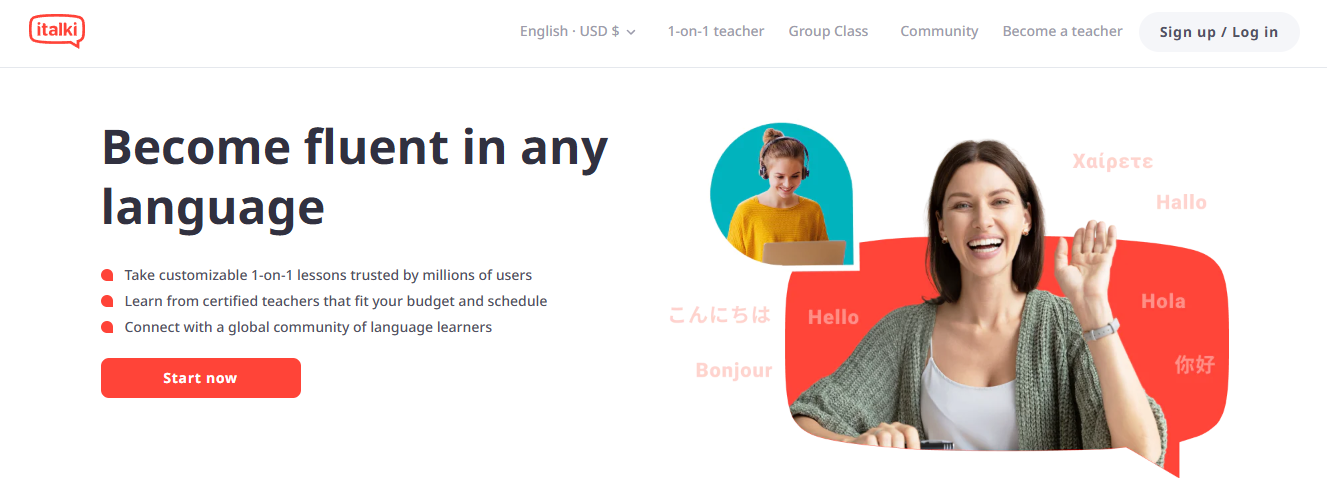
iTalki connects you with human tutors for scheduled, one-on-one lessons priced per hour.
It is best when you:
- Need targeted correction
- Cultural nuance
- Exam prep with a native speaker
Use trial lessons to test teaching styles, then book consistent slots for accountability. Combine brief iTalki sessions with daily AI roleplays to keep conversational momentum between lessons.
5. Duolingo
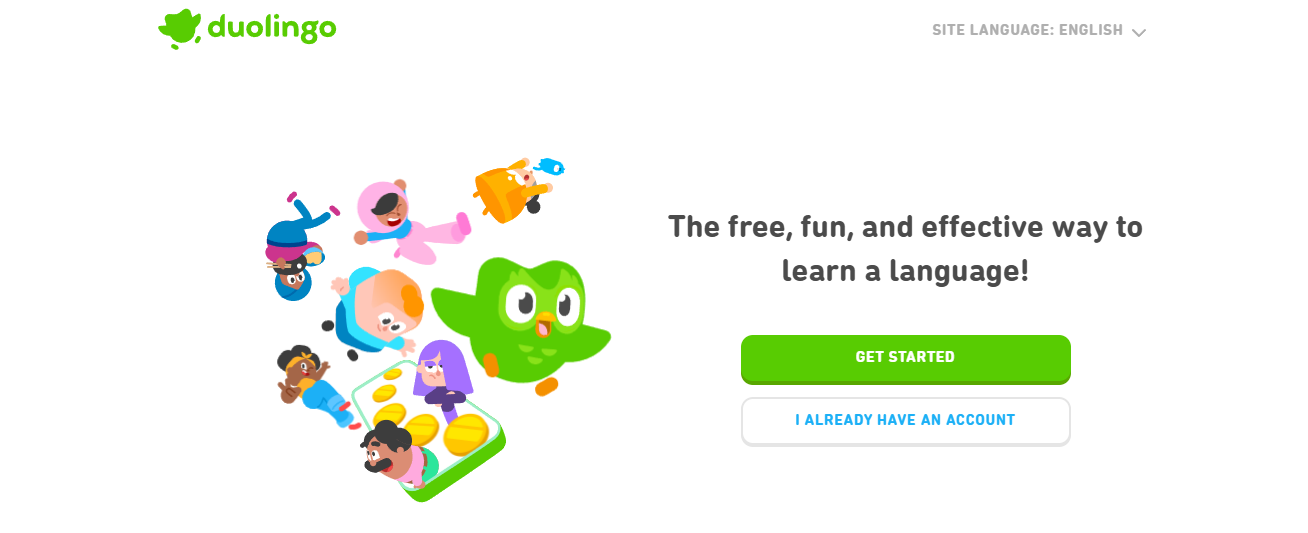
Duolingo is useful for casual vocabulary and phrase practice through gamified drills, but it does not provide deep grammatical explanation or robust speaking drills for advanced usage. Treat it as a daily warm-up, not the core curriculum.
If you enjoy streaks and micro-practice, use Duolingo to reinforce surface-level recall while leaning on conversation-focused tools to build fundamental speaking skills.
6. LingoDeer

LingoDeer provides more robust grammar scaffolding than many gamified apps, offering structured explanations and offline access. It is a good middle ground for beginners who want explicit grammar instruction without a classroom setting.
Watch the lesson order; some sequences can feel counterintuitive, so pair LingoDeer with conversational practice to test grammar in speech.
7. HelloTalk
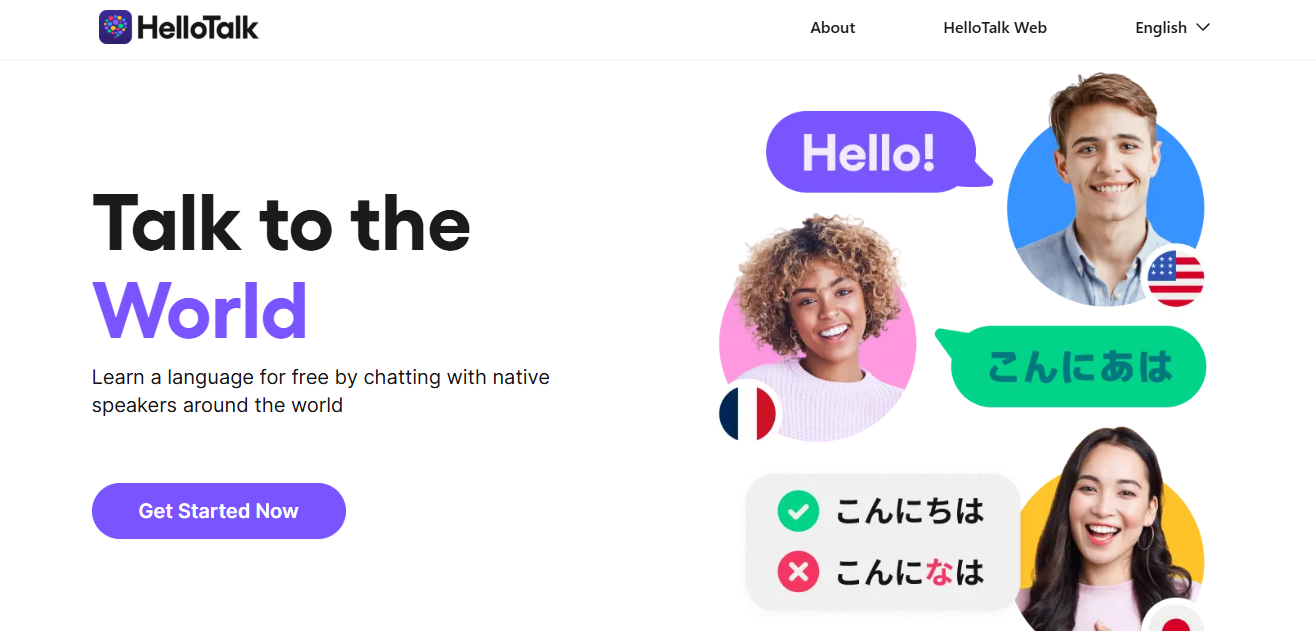
HelloTalk is a language exchange app that connects learners with:
- Native speakers for text
- Voice messages
- Corrections
It does not teach a curriculum; it facilitates practice. Its value scales with community activity, so that you may experience uneven matches. Use HelloTalk for casual voice notes and culture exchange, but expect to supplement with guided lessons if you need structured progression.
8. Mondly
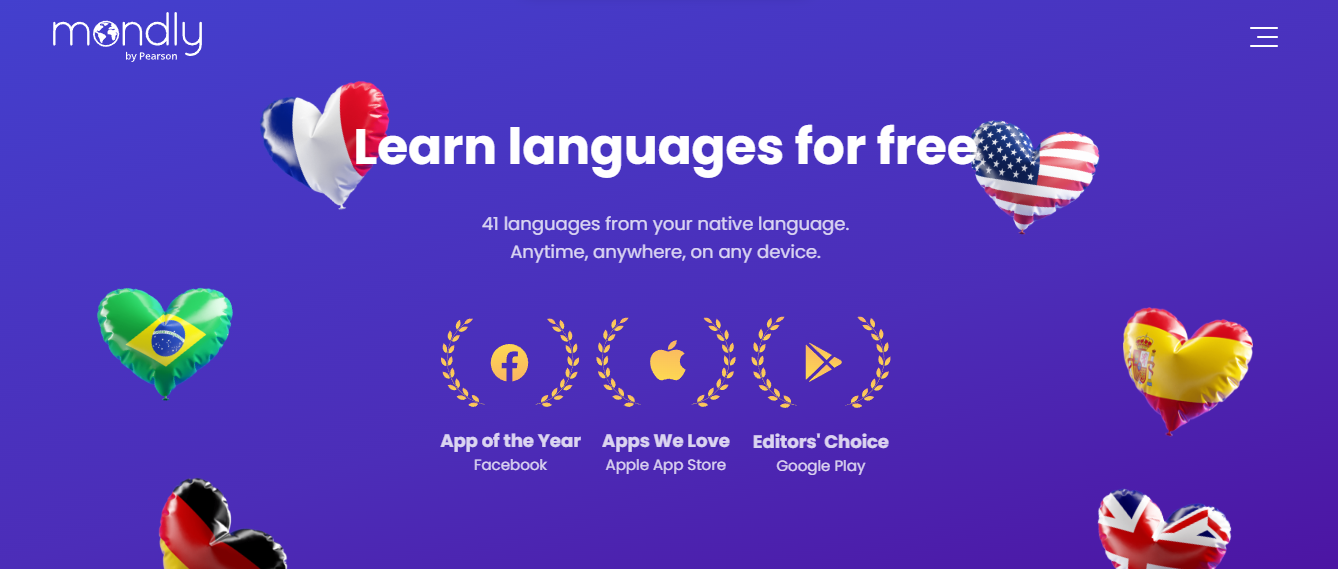
Mondly focuses on vocabulary and short phrase practice using native-language anchors, which works well for quick travel phrases and initial exposure.
Lessons are less linear and less detailed grammatically, so use Mondly for vocabulary breadth and situational phrases, rather than for in-depth grammar or sustained conversation training.
9. Tandem
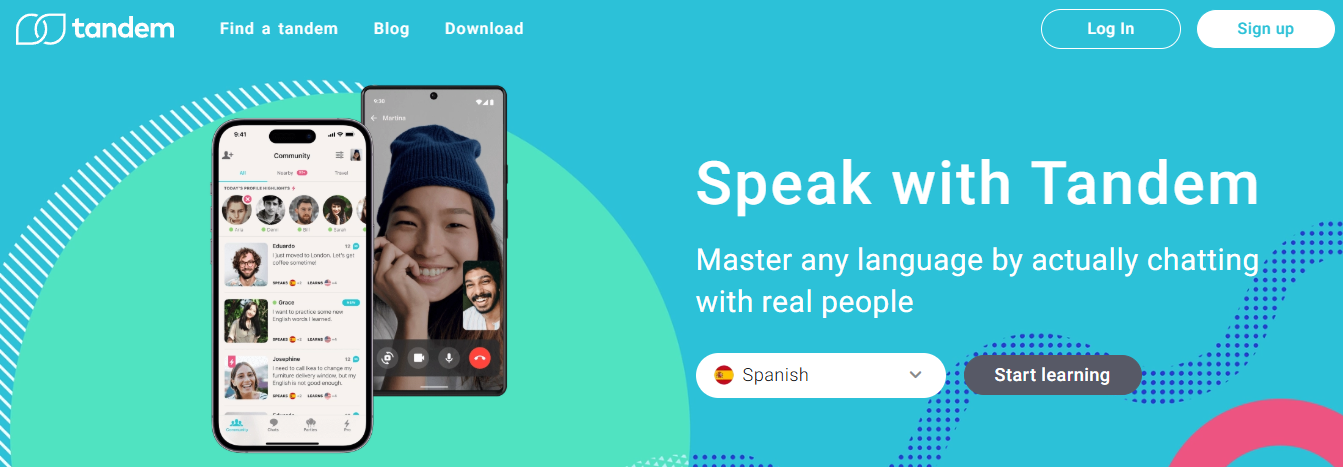
Tandem offers language exchange that emphasizes voice and video calls with native speakers. It is a practical complement for learners who want real conversational exposure without tutor fees.
To consolidate learning, treat Tandem as a practice lab:
- Prepare a concise agenda
- Conduct targeted role-plays
- Record or summarize the session
10. Speechling

Speechling focuses on pronunciation via:
- Recordings
- Feedback
- Speech recognition
If your speaking goal is accuracy and native-like intonation, use Speechling’s feedback loop to refine sounds. Combine short Speechling drills with longer Pingo AI roleplays to translate pronunciation gains into fluent speech.
11. Naver Webtoon
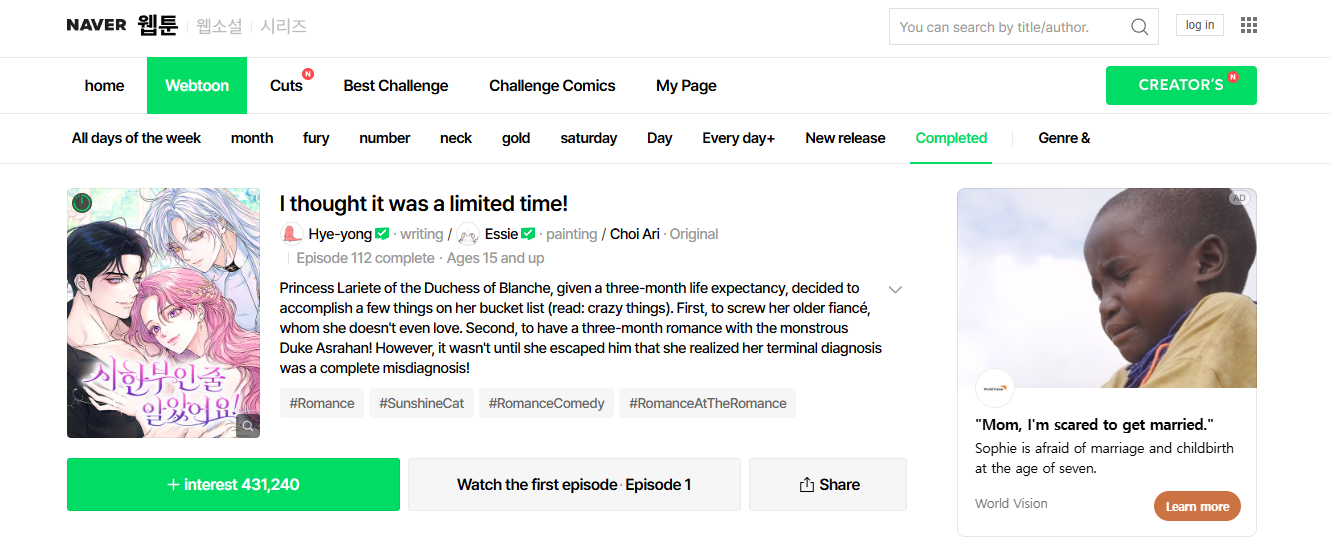
Naver Webtoon gives reading practice through webtoons with translations, making reading more engaging. Use it to develop contextual vocabulary and cultural familiarity while keeping study enjoyable.
Read with a dictionary open and try summarizing panels aloud to practice spoken recall.
12. KoreanClass101 (app note)
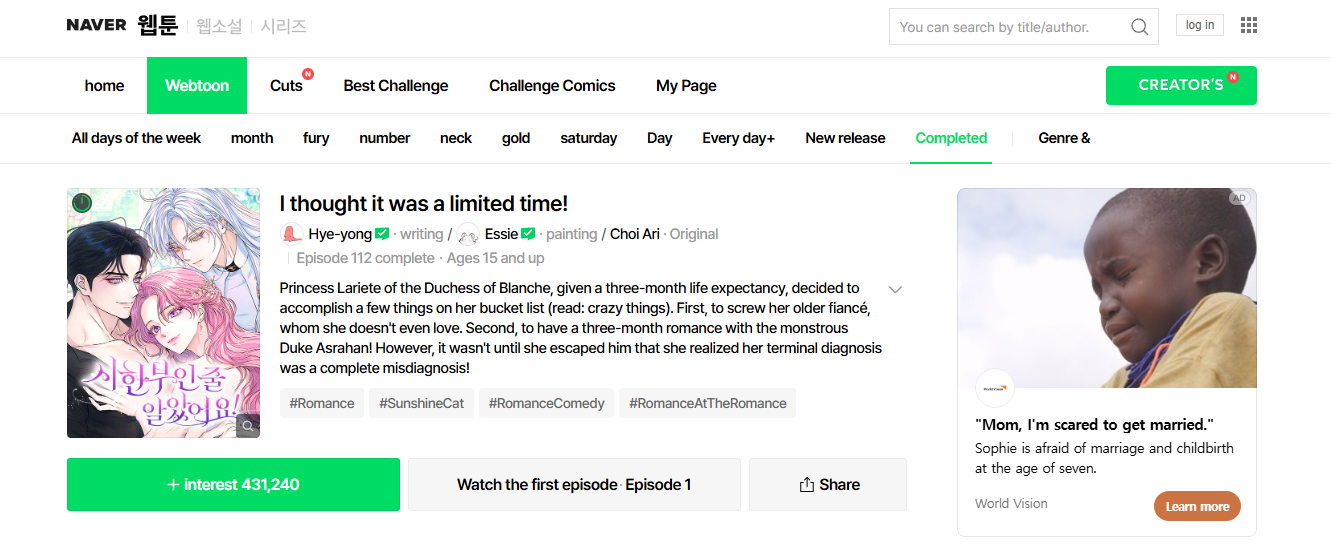
The KoreanClass101 app collects audio and PDF resources for learning on the go. If you already use their lessons, the app is a convenient way to turn commutes into structured listening time.
Use app playback at 1.25x speed to challenge comprehension, then practice key phrases conversationally afterward.
13. Anki
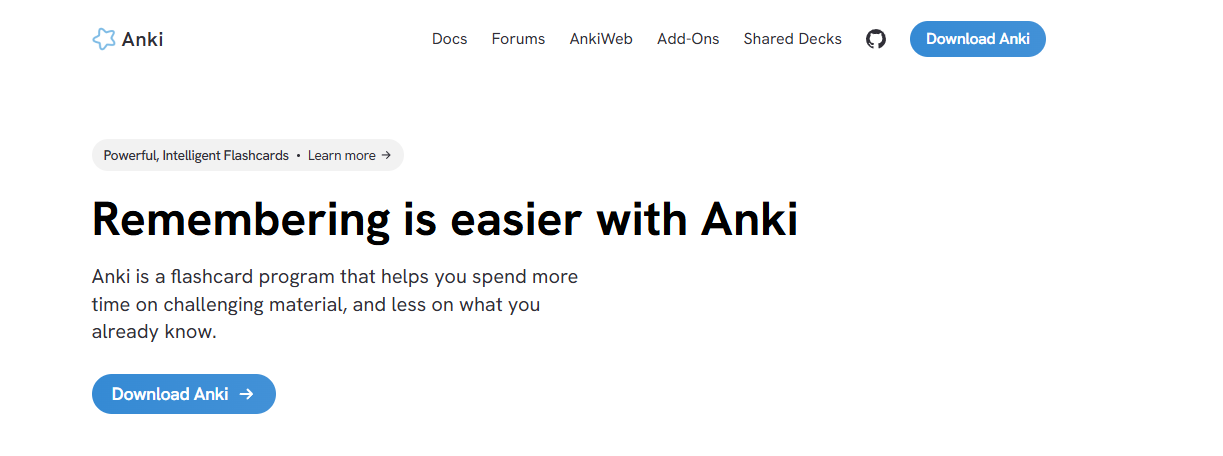
Anki utilizes spaced repetition to solidify vocabulary in long-term memory. It is indispensable when you need high recall rates for words and expressions. Create sentence-based cards rather than isolated words, and review them before Pingo AI or iTalki sessions so you show up ready to use new vocabulary in conversation.
14. Quizlet
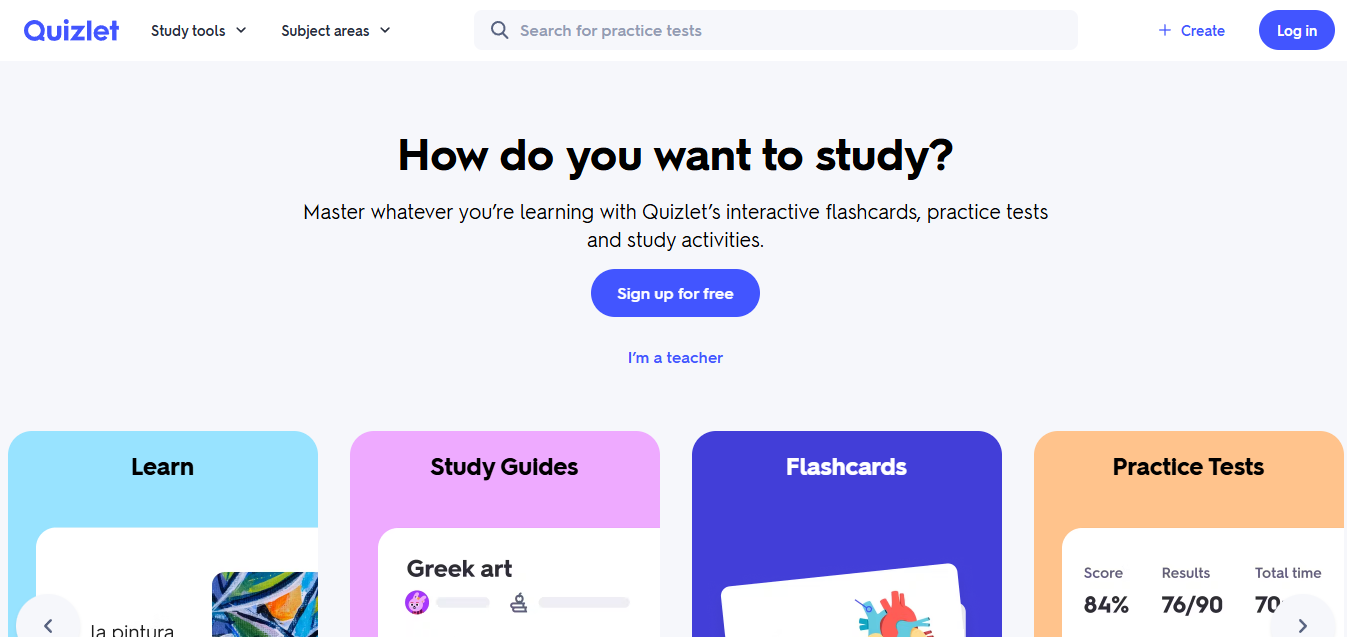
Quizlet provides customizable flashcards and games for vocabulary practice, with quick study modes and simple testing. Use it for thematic drills and review. Its game-like features are good for short bursts but should be paired with speaking-focused work to ensure active use of words.
15. uTalk

uTalk gives bite-sized topic packs for travelers and short-term learners, focusing on useful phrases across everyday scenarios. It is a pragmatic choice if your objective is immediate conversational utility for a trip.
After finishing a pack, bring those phrases into AI roleplays to build confidence in actual use.
16. Pimsleur

Pimsleur emphasizes listening and spoken recall through graduated interval recall and auditory modeling. It is effective for building listening comprehension and oral recall, although it is limited in reading and writing.
Use Pimsleur audio as part of your morning routine, then expand your learning with text-based study and conversation practice for more comprehensive skill development.
17. TOPIK One

TOPIK One targets the Test of Proficiency in Korean, with:
- Past exams
- A dictionary
- Mobile optimization
It is the choice for learners preparing for the official certification or benchmarking their progress. Treat TOPIK One as your assessment tool and use speaking-first practice to shore up weak areas the test does not directly measure.
18. Drops

Drops excels at visual, themed vocabulary with striking design and rapid recall games. It’s excellent for expanding topic-specific word sets. Use short daily Drops sessions for variety, then test recall by speaking sentences in Pingo AI or with a tutor.
19. Talk To Me In Korean
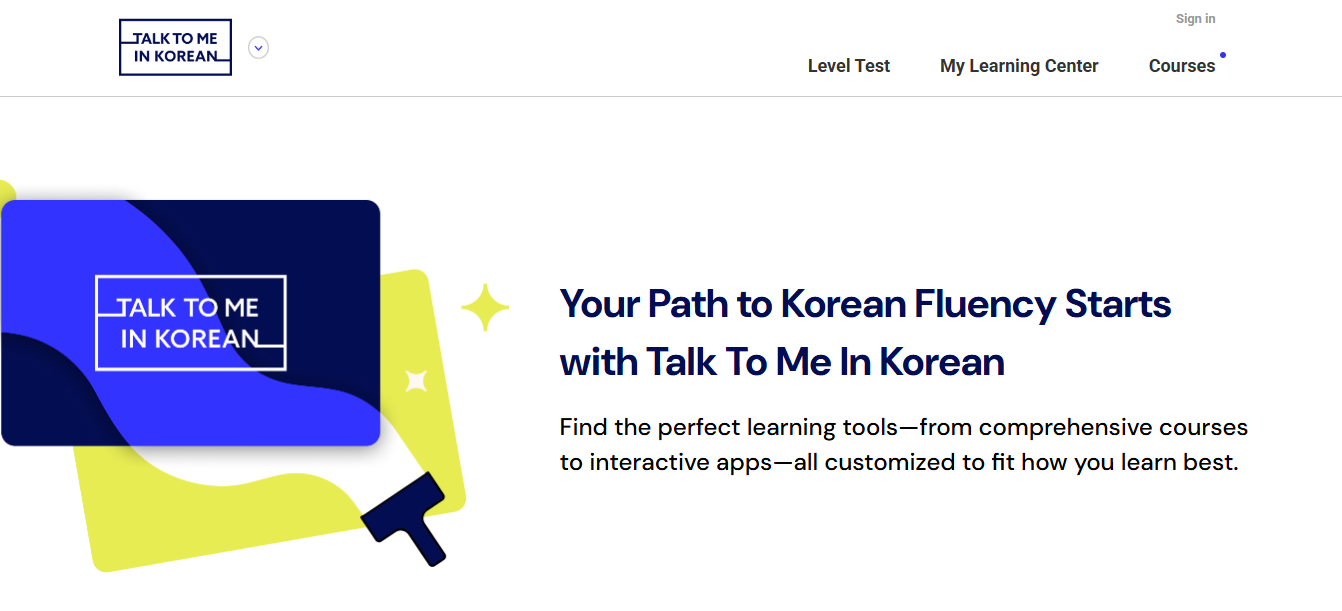
Talk To Me In Korean provides concise videos, podcasts, and PDF resources that make the language approachable for beginners. It is effective for modular lessons and community-driven practice.
Use their materials to develop foundational grammar, then apply that knowledge in live conversation to further develop fluency.
20. Memrise
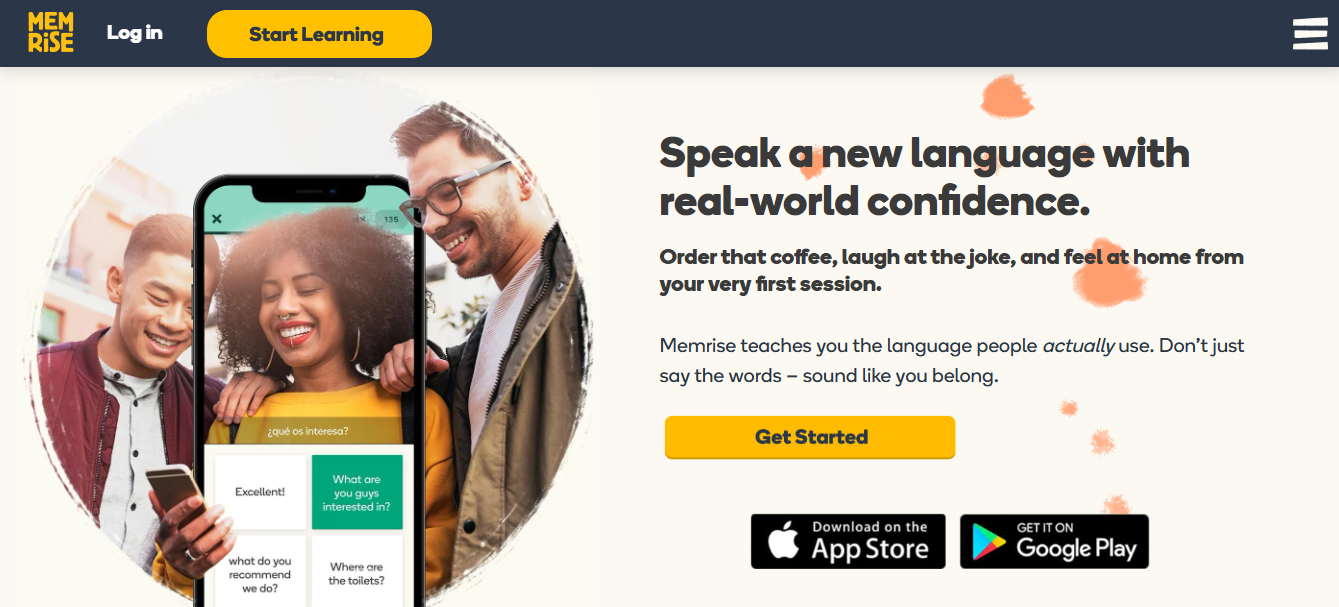
Memrise leverages mnemonics, multimedia, and native speaker videos to boost vocabulary retention and cultural context. It helps bridge the gap between passive recognition and active recall.
Practice with Memrise, then reinforce active production through role-plays or voice exchanges to bridge the gap between recognition and speech.
21. Rakuten Viki
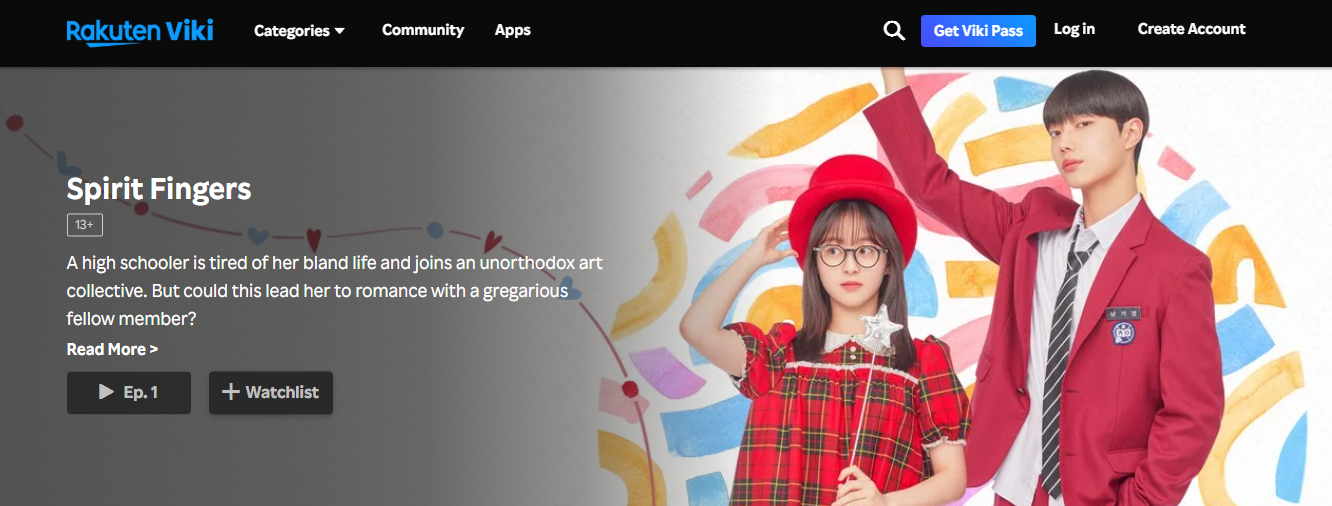
Rakuten Viki offers authentic K-dramas and films with community subtitles, which is ideal for immersive listening and cultural nuance. Use shows to build listening stamina and colloquial vocabulary; pause and shadow actors to practice rhythm and intonation, then test those lines in conversation sessions.
22. FluentU

FluentU maps authentic videos into interactive lessons with transcripts and quizzes. It is a multimedia way to learn vocabulary in context. When a phrase sticks on FluentU, reproduce it in a Pingo AI scenario so you practice the phrase conversationally, not just passively.
23. Naver Dictionary

Naver Dictionary is the comprehensive reference for idioms, example sentences, audio pronunciation, and reverse lookup. Use it as your daily lookup tool and build curated vocabulary lists to import into Anki or Pingo AI lesson scripts for targeted practice.
24. Beelinguapp

Beelinguapp utilizes parallel texts and synchronized audio to enhance reading and listening skills simultaneously. Read along with the native narration and then retell the story aloud to convert passive comprehension into spoken ability. It is especially useful for learners who learn best through reading.
25. Eggbun
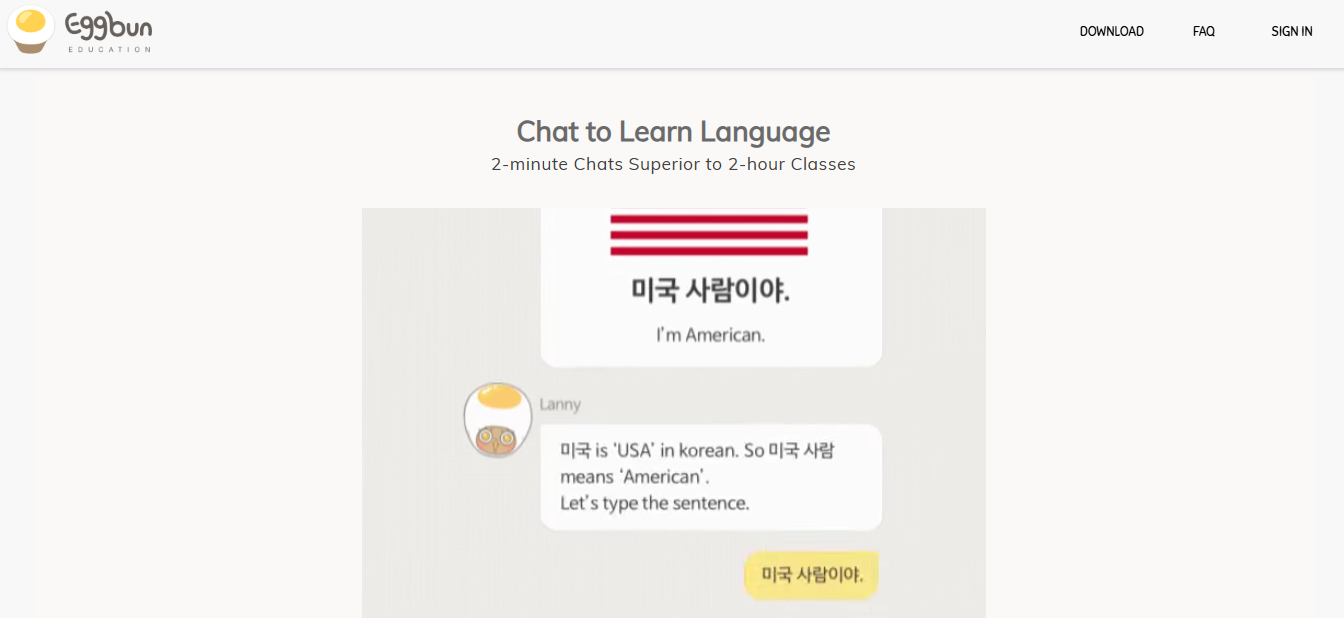
Eggbun teaches through chat-based lessons that simulate messaging conversations and role-playing scenarios. It is retention-focused, with typing practice and situational modules. Because it mimics chat, Eggbun builds practical phrase use; you should escalate to full-sentence, voice-based roleplays to overcome the limitations of text-only practice.
Status Quo, The Hidden Cost, And The Better Path
Most learners manage study with flashcard apps, passive listening, and occasional lessons because those methods are familiar and require little setup. That works for vocabulary and exposure at first, but it fragments practice: learners can recognize phrases yet freeze when a conversation deviates, and progress plateaus because production is under-trained.
Solutions like Pingo AI offer ultra-realistic roleplays, Tutor Mode, and targeted corrections, providing learners with consistent, scenario-based speaking practice that compresses conversational experience into daily sessions and bridges the gap between comprehension and fluent use.
Practical Pairing Guidance I Use With Students
When learners tell me they want everyday fluency within months, the pattern is consistent: single-tool study stalls. A reliable stack is a conversation-first tool for production, a spaced-repetition system for retention, and a curated media source for input.
For example, combine Pingo-style roleplays three times a week, conduct short Anki reviews daily, and watch one episode on Rakuten Viki for cultural context. That mix addresses the two common failure modes: passive recognition and lack of spontaneous speech.
A Word About Expectations And Motivation
It feels exhausting when progress is slow, and many learners lose momentum because exercises never feel like real talk. That frustration explains why combining practice types is essential and why immediate, corrective speaking practice can significantly impact motivation.
To achieve measurable confidence gains in weeks, prioritize daily microconversations and actionable feedback over lengthy, passive drills.
Curiosity Loop
What you do with the apps you choose matters more than which ones you pick, and the trick to turning tools into fundamental spoken skills is straightforward, until you see how it plays out.
Related Reading
- Babbel vs Duolingo
- How Much Is Duolingo Max
- How Much Does Babbel Cost
- Rosetta Stone vs Duolingo
- Best Apps to Learn Spanish
- Best Apps to Learn Japanese
- Busuu vs Duolingo
- Duolingo Alternatives
How to Make the Most of a Language Learning App

Treat every app minute as skill practice, not entertainment. Focus your session on production, immediate correction, and a tiny transfer task that forces you to use what you just said in a new way.
How Should I Structure A Short, High-Impact Session?
When you only have ten minutes, run a strict production cycle:
- One minute to cue up context and vocabulary
- Five minutes of a goal-oriented roleplay where you must speak and respond
- Two minutes of recording or replaying your turns
- Two minutes writing one clear correction and building one sentence-card from it
That sequence converts fleeting practice into durable gains because it closes the loop between:
- Attempt
- Feedback
- Deliberate repair
What Exactly Should I Capture After A Roleplay?
The critical habit is a focused error log, not a laundry list. Write the one pronunciation error that blocked fluency, the one grammar choice that slowed you down, and the one phrase you can reuse immediately.
Turn those three items into concrete micro-tasks:
- A five-rep pronunciation drill
- An Anki sentence card
- And a fresh two-line response you will use in the next roleplay
This turns practice into iterative improvement, much like a musician repeats a bar until the timing becomes automatic.
Does Evidence Actually Support This Kind Of Structured Use?
Yes, and it explains why apps can make a significant impact when used deliberately. The linked finding, Selin Namak, “90% of users report improved language skills after using apps regularly for six months,” published in 2025, shows that consistent, focused app use produces measurable skill gains within a few months.
That outcome is not accidental; it occurs when:
- Learners force production
- Receive corrective feedback
- Immediately reuse the corrected language
What Do Most Learners Actually Do, And Why Does It Fall Short?
The familiar approach is to grind passive drills because they are low friction and feel like progress. As practice volume grows, this habit masks production gaps: learners recognize words but still struggle with spontaneous speech.
This is why many combine tools rather than rely on a single one, and why Language Learning Insights reports that “85% of language learners use apps to supplement their learning,” frames apps primarily as part of a broader learning system rather than a silver bullet.
How Can Modern Tools Change The Cost Of Sticking With Speaking Practice?
Most learners manage with passive apps and occasional lessons because that routine is familiar to them.
The hidden cost is:
- Slow transfer to conversation
- Mounting frustration
- Wasted study hours
Solutions like Pingo AI offer ultra-realistic, native-sounding roleplays, Tutor Mode, and actionable feedback across over 200 real-world scenarios, enabling learners to condense their conversational experience into short, repeatable sessions and achieve measurable confidence gains within weeks.
Why Does Authenticity Matter So Much In Practice Content?
This pattern appears across learners who stop showing up when the audio feels synthetic. Hearing a phrase read by a real voice, or by high-quality native-sounding AI, changes how you mimic:
- Rhythm
- Stress
- Intonation
Think of it as rehearsing for a conversation at a real dinner party rather than practicing lines for an empty stage; the closer the sound is to reality, the faster your mouth and ear learn to work together.
Which App Metrics Should Actually Change Your Study Plan?
Constraint-based rule:
- If the app only gives binary correctness and no detailed
- Replayable feedback
- Pair it with tools that produce recorded turns and timestamped corrections
Track three things weekly, not a dozen vanity metrics:
- Percent of turns you replay
- Number of distinct corrections implemented
- Whether you used corrected language in a new context
When those three climb, production improves; when they stall, adjust the input or increase corrective intensity. It feels like progress until you try to speak for real, and that gap is where the next section begins.
Related Reading
- Memrise vs Duolingo
- Best Apps to Learn French
- Lingodeer vs Duolingo
- Pimsleur vs Babbel
- Jumpspeak vs Duolingo
- Best Apps to Learn Mandarin
- Best Apps to Learn Arabic
- Best Apps for Learning English
- Best Russian Learning Apps
How to Choose the Right Korean App for You

Choose an app that matches the skill you want to develop, not the features you like.
Focus on whether the tool enables you to:
- Speak under pressure
- Provides replayable
- Specific corrections
- Encourages the reuse of corrected language in real contexts
What Should I Prioritize When Matching An App To My Goals?
Pattern recognition matters:
- If your goal is conversational fluency
- Prioritize production-first features like open-ended roleplays
- Voice input that records your turns
- Timestamped feedback you can act on
If you need to improve your reading and literacy, prioritize structured Hangul modules with stroke-order practice and integrated sentence reading, and then test how quickly you can transition from recognition to aloud production. This choice matters because mismatches cause stalled progress and frustration when a feature set appears promising on paper but fails to deliver real-world speech.
How Do You Judge The Quality Of Speaking Feedback?
Test feedback under three constraints: is it:
- Specific
- Repeatable
- Actionable
Ask the app to show you a recording of a failed turn, then check whether it highlights the precise syllable, gives a corrective model, and gives a short drill you can do immediately.
The Rating Value: 4 out of 5, AppstoreSpy.com, signals general user satisfaction for some apps, but satisfaction scores rarely reveal whether corrections are deep or merely binary; you must audit a few real corrections yourself.
Why Do So Many Learners Feel Stuck, And What Breaks Early-Stage Choices?
This challenge is evident among both casual learners and classroom students: apps built around memorization create the illusion of progress while leaving production untrained. It feels exhausting when you can recognize phrases but freeze when the conversation deviates.
That hidden cost is predictable because recognition tasks do not train retrieval under communicative stress, and retrieval is the bottleneck for spoken fluency. Most people handle this by sampling apps casually, as trials are low-friction and familiar, but what hidden costs emerge as use scales?
The Compression Effect: Quantifying Conversational Exposure in AI Drills
As sessions accumulate, passive drills pile up while true speaking opportunities remain rare, which means confidence grows more slowly than time spent.
Platforms like AI language learning apps close that gap by providing high-frequency, native-sounding practice with replayable corrections and adaptive prompts, so learners compress conversational exposure into short, repeatable sessions that produce measurable gains rather than vanity metrics.
How Can You Validate Fit Before You Subscribe?
Run three quick experiments during a free trial:
- Initiate an unstructured conversation and deliberately make a pronunciation error to see if the app highlights it
- Request a roleplay where formality shifts mid-dialog and observe whether the app guides correct speech levels
- Export or note corrections and test if you can use the corrected phrase in a fresh prompt within 24 hours.
Also, check the community signal, since an active user base often means faster bug reports and richer example questions, for instance the Rating Count: 2891, AppstoreSpy.com, can indicate an engaged review pool to learn from.
What Practical, Rarely-Mentioned Tests Separate Good From Great Apps?
Try the sparring test:
- Have the app introduce unexpected input, like slang, wrong answers
- Off-script replies
- Observe whether it forces you to repair and clarify
Good apps simulate the awkwardness of real conversation, they force role switching, and they make repair common and teachable. If an app smooths every misstep into an easy multiple-choice win, it is not training the skill you actually need.
The Critical Flaw of Passive Immersion: Why Listening Alone Isn't Enough
Pingo's AI language learning app makes conversation-first practice feel like real life, with adaptive feedback and expressive AI that helps you improve faster. Start speaking with Pingo for free and discover how short, daily conversations can help you build real-world speaking confidence.
That decision feels final until daily use exposes the single mistake that quietly stalls most learners.
8 Best Tips for Learning Korean

These eight tips are the practical steps that actually move you from recognition to usable speech, fast. Each item below names the practice and then shows exactly how to use it for speaking-first progress, with concrete actions you can take today.
1. Learn the Hangul alphabet
When a learner finally commits to Hangul, they stop guessing pronunciation and start reading new words as soon as they see them.
Spend your first week on the shapes, one sound family at a time, then force production by:
- Reading aloud every menu
- Subtitle line
- App prompts you to meet that day
Treat Hangul like a tool, not a theory: you want to convert visual input into spoken output within seconds.
An analogy: Hangul is the key that turns written Korean from a locked chest into usable tools on your workbench.
2. Focus On Vocabulary
Group words by themes, then use output-first drills to lock them. Build 5 thematic lists of 20 words each, then create one 3-minute roleplay prompt that forces you to use those 20 words in sentences. Use flashcards for review, but always follow a review with a two-minute speaking replay where you must use three newly learned words in context.
Keep a small notebook and record the single sentence that shows how you heard the word used, the mistake you made saying it, and the corrected line you will reuse next time.
3. Benefit From Korean Word Families
Pattern recognition shrinks memorization. When we taught learners to spot hanja roots, the common failure mode stopped being “I forgot the word” and became “I failed to apply the root.”
Learn a handful of high-frequency roots like 학 and practice generating five related words aloud, then test yourself by guessing meanings for unfamiliar compounds in a minute-long rapid-fire drill.
That gives you a predictive habit: when you see 학 in a new word, you already have a working hypothesis for its meaning.
4. Use Loanwords And Konglish
Start with loanwords as low-friction vocabulary you can actually say, but practice the Koreanized pronunciation immediately. Create a short script of eight Konglish terms you use daily, and rehearse them until your mouth moves naturally to the Korean syllable shape.
This saves time and builds confidence, but be aware of false friends where the meaning or register differs, and prompt a quick correction drill when that happens.
5. Study Korean Daily
Consistency beats intensity.
Commit to a realistic one-hour daily routine, broken into micro-tasks:
- 15 minutes of vocal shadowing
- 20 minutes of targeted roleplay or conversation
- 15 minutes of focused review
- 10 minutes of logging one actionable correction
If your schedule only allows 20 minutes, compress the same cycle:
- 5 minutes of warm-up
- 10 minutes of speaking
- 5 minutes of note and retrieval practice
This structure preserves momentum and prevents the common burnout that occurs when long, unstructured sessions produce little usable speaking skill.
6. Practice Real-Life Korean Conversations
Textbook dialogs fail when real talk veers off-script. This pattern is evident in classroom learners who can recite phrases but struggle with improvisation.
Seek forced-repair opportunities:
- Deliberately answer a prompt incorrectly
- Practice clarifying
- Repairing your meaning aloud
Join language exchanges or set up short, agenda-driven roleplays with natives or AI that require you to ask:
- For clarification
- Change formality
- Give spontaneous explanations
Those repair moments are the compression points where real fluency forms.
7. Watch K-Dramas And Listen To Podcasts
Use media with deliberate production tasks, not passive binges. Watch one short clip, transcribe two lines, then produce them aloud until your intonation matches. Switch subtitles off for short segments to force listening, then replay to catch missed grammar.
Media provides you with real phrasing and cultural timing, so convert passive exposure into active rehearsal by shadowing, transcribing, and reusing lines in a role-play within 24 hours.
8. Study in Korea
Immersion accelerates the loop between attempt and feedback. If travel or long-term study is realistic, plan a focused objective for your time, for example: “Order everything only in Korean for two weeks” or “attend a weekly community class and report once per week in spoken form.”
That constraint forces high-rate speaking, and high-rate speaking reveals the exact pronunciation and register issues that need to be fixed. If travel is not possible, simulate the constraint locally by creating daily tasks that force production under small stakes.
Beyond Passive Learning: Pingo's Roleplays for Spontaneous Speaking
Most learners follow familiar routines of passive review and occasional lessons because they are comfortable and straightforward, and that works at first. As study scales, the hidden cost becomes apparent: recognition grows, but spontaneous production stalls, and conversations expose that gap in ways repetition alone never predicts.
Solutions like Pingo AI provide a practical bridge by delivering ultra-realistic, native-sounding roleplays, Tutor Mode with detailed replayable feedback, and hundreds of real-world scenarios so learners can compress conversational exposure into short, repeatable sessions that produce measurable confidence gains in weeks.
The Global Payoff: Conversation-First Korean for 75 Million Speakers
Why does this matter beyond feeling better about progress? Korean is the 13th most spoken language in the world. That scale means authentic input and useful practice partners are available widely, which you should exploit deliberately.
Also, over 75 million people speak Korean worldwide. This reach amplifies the value of conversation-first practice, as the phrases and registers you rehearse will match those of real speakers you meet.
The Confidence Multiplier: Turning Error Correction into Predictable Fluency Gains
A final, practical habit: after every speaking session, capture one error that blocked you, write the corrected sentence, and schedule a two-minute drill within 48 hours that forces reuse. This three-step micro-cycle closes the loop between attempt, feedback, and durable change, where measurable fluency actually occurs.
That feels like an endpoint, until you discover the one change that flips weekly practice into steady, visible confidence.
Related Reading
- Best Apps for Learning Spanish
- Best Apps for Learning Portuguese
- Best Apps for Learning Spanish
- Best Apps for Learning Russian
- Best Apps for Learning Italian
- Best Apps for Learning German
- Best Apps for Learning English
- Best Russian Learning Apps
Start Learning A Language with Pingo for Free Today
I know it can be draining when apps cycle the same drills and never force real repair, so try a conversation-first routine that makes mistakes useful and practice feel urgent. Try Pingo for a short experiment. Pingo AI, 80% of users report improved speaking skills within 3 months.
With over 1 million downloads, it suggests that many learners have already chosen this path, so test whether focused speaking sessions can boost your confidence where you need it.